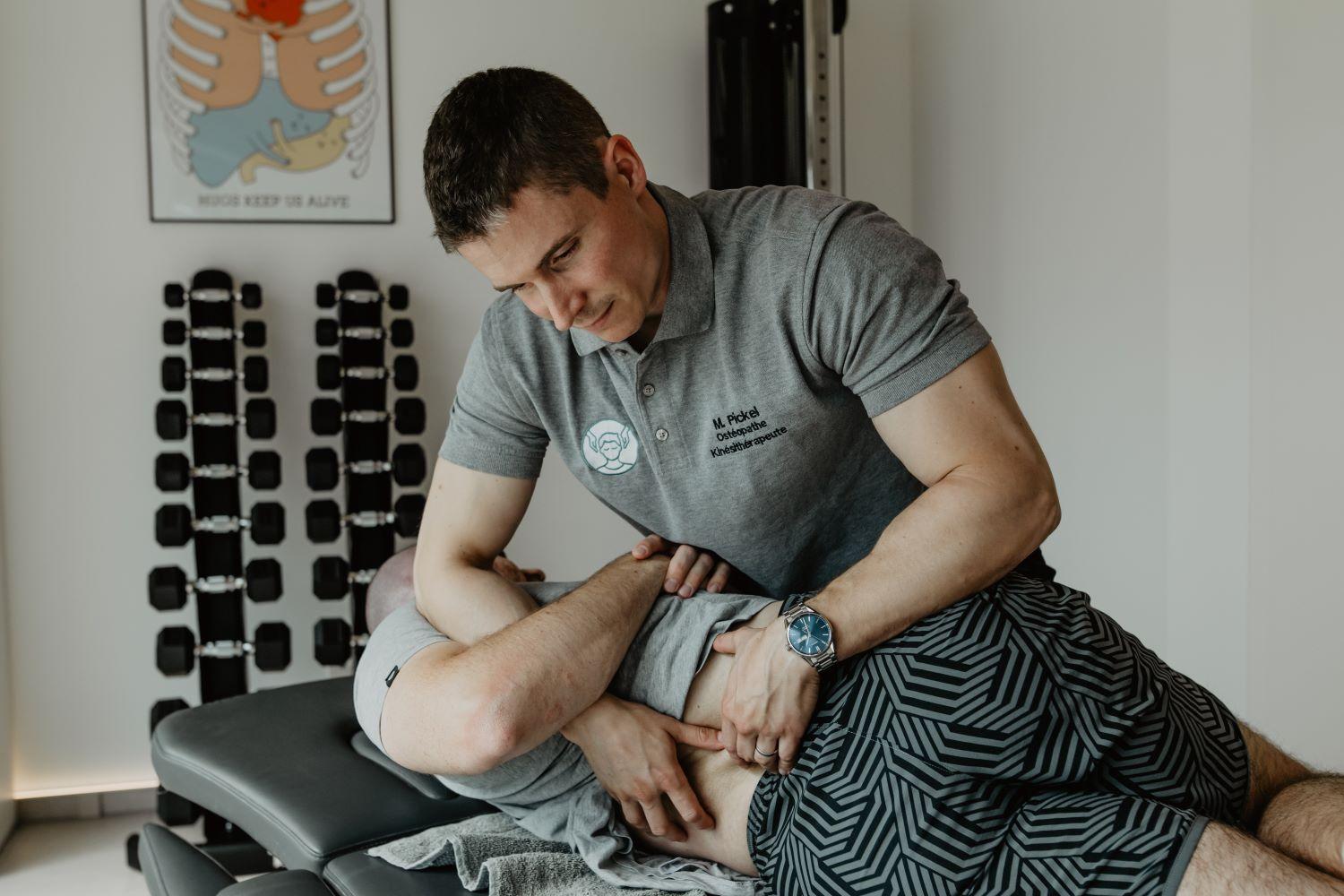Osteopathy
What is osteopathy, and how is a treatment structured?
Osteopathy is a holistic therapy that views the body as an interconnected system. It aims to support the body's natural ability to heal and self-regulate. Gentle manual techniques are used to release blockages and improve mobility. Osteopathy is based on five fundamental principles:
Everything in the body is interconnected. If one part of the body is impaired, it can affect other areas. Osteopaths therefore consider the body as a whole and treat not only the symptoms but the root cause of complaints.
The physical structure of bones, muscles, ligaments, and joints influences the body's functions. Since everything in the body is interconnected, a misalignment or blockage can affect the body, manifesting, for example, in symptoms like digestive issues. Conversely, impaired function can negatively impact the structure.
The body has natural mechanisms to heal itself. We osteopaths help activate these self-healing powers by releasing blockages and restoring balance to the body.
Healthy movement is crucial for well-being. Restrictions in movement, whether due to tension, pain, or blockages, can negatively affect health. Osteopathy promotes mobility and helps the body move freely and without pain.
Every person is unique, so each treatment is customized to the patient's specific needs and complaints. The osteopath develops a tailored treatment plan together with the patient, aligned with their personal health goals.
